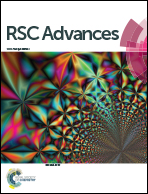Resonant energy transfer in (Eu3+, Bi3+)-codoped CaZrO3 red-emitting phosphor
Abstract
(Eu3+, Bi3+)-codoped CaZrO3 phosphor crystallizing in the orthorhombic structure was synthesized from a mixture of CaCO3, ZrO2, Eu2O3, and Bi2O3 using the solid-state reaction method. The structural and optical properties of this phosphor were investigated using X-ray diffraction analysis, photoluminescence (PL) analysis, PL excitation (PLE) spectroscopy, and PL decay measurements. The effects of Bi3+ codoping on the Eu3+ emission properties were discussed in detail. Temperature dependence of the PL intensity was also measured between T = 20 and 450 K and obtained a quenching energy of Eq ∼ 0.1 eV. Remarkably, the red emission intensity of Eu3+ in the (Eu3+, Bi3+)-codoped phosphor was enhanced more than 10 times compared to the Eu3+ singly doped phosphor, thereby suggesting an efficient resonant energy transfer from Bi3+ to Eu3+. The asymmetry ratio (5D0 → 7F2)/(5D0 → 7F1) for the Eu3+ emission had different values with different Eu3+ concentrations, indicating that its local site depends on the Eu3+/Bi3+ concentration. Comparative discussion was also given on the PL spectra for some red-emitting phosphors, CaZrO3:Eu3+, Bi3+, SnO2:Eu3+, and K2SiF6:Mn4+.


 Please wait while we load your content...
Please wait while we load your content...